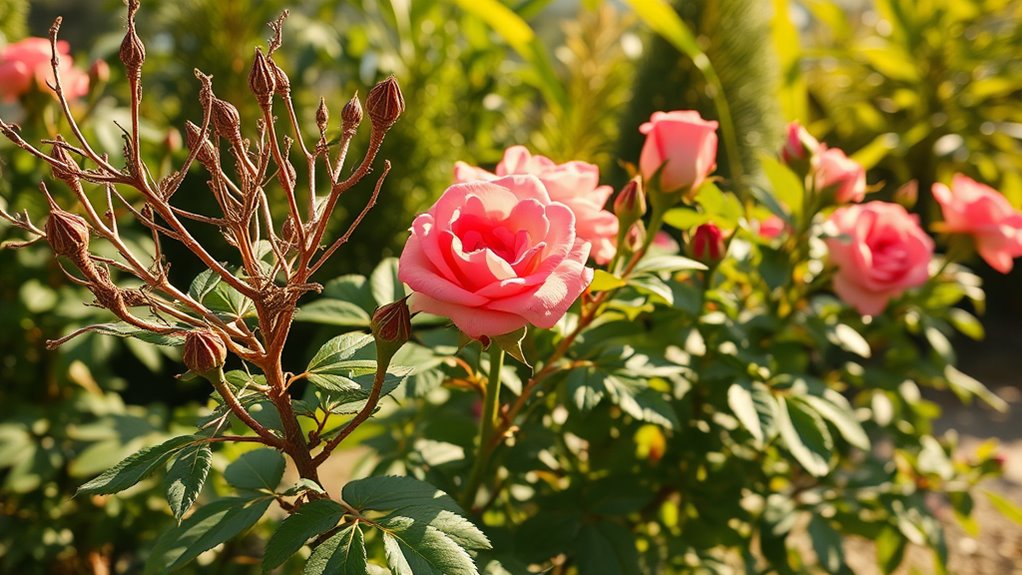Stop Over-Pruning! Here’s What You Actually Need to Cut
You’re over-pruning your plants, stressing them and making them vulnerable to diseases and pests. Instead, focus on removing dead or diseased wood and thinning crowded branches with sharp shears, making clean 45-degree cuts above buds for better air flow and growth. These essential trims will boost vigor and help your plants thrive stronger. Explore these strategies further to master plant care effortlessly.
The Risks of Over-Pruning
Have you ever wondered why over-pruning can harm your plants?
Over-pruning stresses them by removing too much foliage, leaving roots exposed and vulnerable to diseases.
You’ll weaken plant structure, invite pests, and stunt growth, reducing overall vigor.
Follow sound pruning advice: always cut less than you think necessary to maintain health and balance, ensuring recovery without long-term damage. Additionally, avoid common pruning mistakes such as proper techniques that can lead to poor plant health and increased vulnerability.
Essential Cuts for Plant Vitality
To maintain your plant’s health, master the essential cuts that remove dead or diseased branches, promote new growth, and enhance overall structure.
Begin by identifying dead wood for immediate removal, using sharp shears for clean cuts above buds.
You’ll encourage vigorous shoots by pruning at a 45-degree angle, improving air flow and light exposure.
For shaping, selectively thin crowded areas to boost vigor and form. Additionally, essential pruning techniques can help ensure that plants thrive by allowing for better nutrient distribution and health.
Spotting Unnecessary Pruning
You identify it by first checking if your plant has no dead, diseased, or overcrowded parts—healthy growth means hands off. Watch for urges to cut just for shape or habit, as these often cause stress without benefits. If your plant thrives without intervention, any trim is likely excessive, risking long-term damage. Always pause and assess needs first. Additionally, understanding common pruning mistakes can help you make more informed decisions about when and how to prune effectively.
Best Practices for Selective Trimming
Selective trimming enhances your plant’s health by targeting only what’s necessary, so you’ll want to start with sharp, clean tools to make precise cuts that promote growth.
Identify dead or diseased parts first to prevent spread; make cuts at a 45-degree angle for quick healing.
Step back to assess the plant’s shape, ensuring you remove only crossing branches that hinder airflow.
Always prioritize minimal intervention for best results. Additionally, understanding essential pruning techniques will help you make informed decisions about what to cut and when.
Promoting Healthy Growth Through Pruning
Pruning goes beyond mere maintenance; it actively boosts your plant’s vigor by redirecting energy to healthier areas.
Here’s how you can promote healthy growth:
- Identify and remove dead or dying branches to prevent disease and encourage new shoots.
- Thin out dense areas to allow better light and air, reducing pest risks.
- Make precise cuts above buds for quick healing and stronger recovery.
Incorporating regular deadheading techniques can also enhance blooming, ensuring your plants remain vibrant throughout the season.
This approach guarantees thriving plants.

